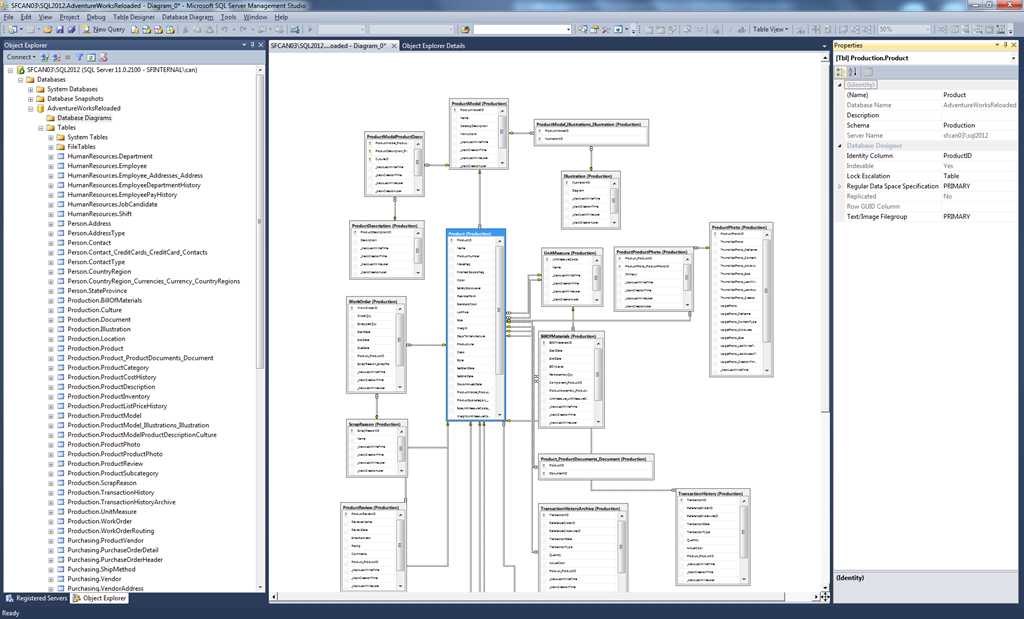
or assumption that DB, of specific name, exists, or chance that that DB does exist and is pre-DROPPed / whatever). Personally I don't think that runing the script is the problem because the script was generated on a different server it may well be completely inappropriate for the current environment (location of files etc. by overwriting it, or deleting it) on your computer.į/t/download-ms-sql-server-management-studio-express/4708/41į/t/download-ms-sql-server-management-studio-express/4708/32 There are a whole host of similar things which could go wrong which someone with a bit of MS SQL knowledge will easily be able to solve but if you do it on your own, with the help of a forum like this, it will take "for ever" and may well destroy something useful (e.g. The reason I say this is that it is likely that your script uses a specifically named database, and creates it on a specifically named drive in specifically named folders (all/any of which may not exist on your computer).
#Sql studio express full#
Therefore I suggest that you either ask the person who sent you the SQL script to, instead, send you a Full Backup File (which it will be easy for people here to help you restore onto your computer), or you ask someone with more MS SQL knowledge to modify your script so that it will run safely on your machine and create the database etc.

I think it is very unlikely that, without more knowledge about MS SQL than you have, that you will be able to "just use" the SQL script that you have. (In any event the output would have been huge, so trying to find any errors in such a file would be a "challenge") Your previous attempt appeared to work using SQLCMD - but as you did not save the output to a file, if there were any errors you won't have been able to see them as they scrolled up the screen and you can't check the file, retrospectively, to check for any errors. You haven't replied to either of the messages I posted to help you earlier. (I've forgotten what the size limit is in Excel, it used to be 32K, maybe it is "huge" now?) You could use that to check that you have exactly the right number (compared to the original database that your script was created from)Īlso beware that your script was very big, and it might be that there are too many rows in the table to be able to export to Excel. Which will tell you how many rows are in the table. Thus you should review the data (once you have exported it to Excel) to make sure nothing is missing. NOTE: I presume you were not able to see any error messages when you ran your script, as they would have scroll up / off the screen very quickly.
#Sql studio express how to#
Probably best to use the SSIS tool for that if you have that installed? Other people here may have suggests on how you can best export your database to Excel, given that you have zero knowledge of the tools available and how to use them it would clearly help if you have the "easiest" method, starting from that base. Once you have decided on which tables you are interested in then you can export them to Excel. Which will show you the first 100 rows (i.e. If you see a schema / table that you like the look of type: SELECT TOP 100 *

Once you are connected to the right database you can see what schema and tables it contains: SELECT = S.name + '.' + T.name Then you can "connect" to that database with: USE YourDatabaseName Hopefully there is just one other name, and that will be your database. Ignore "master", "tempdb", "model" and "msdb".

Start your SQL tool and use this command to view the database names: SELECT name However, the fact that the script finished showing all "1 rows affected" messages is a good sign - the script most likely did create a database. so you won't know if all rows were successfully inserted. You probably were not able to see any error messages during the running of the script. Presumably your SQL script already did that, otherwise you would have seen errors when the script ran (but it appears from your screen shot that you have "1 rows affected" messages, which probably means that a row was inserted into a database's table.


 0 kommentar(er)
0 kommentar(er)
